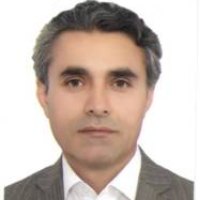An Investigation of the Concept of Nature in Pahlavi’s Architecture Ornaments by Exploration of Discourse Approach
Nature-based ornaments are the integral part of Iranian architecture which has a kind of communication with the audiences picturing a world of values and thoughts by using geometric and non-geometric motifs. As time went by new structural and conceptual changes were created so that, by the birth of new discourses in Iran, in the Pahlavi period, they took a different appearance and presented various concepts to the audiences.Research
The purpose of the study is to identify and interpret the concept of nature in ornament of architecture in the Pahlavi period with exploration in discourse approach.
The present study was a qualitative research and data were collected by using documentary and field studies. For analyzing data, the discourse analysis technique was used.
The concept of “nature” in ornament manifested itself following nationalism, traditionalism, and westernization discourses of the First Pahlavi under the domination of the “political-religious power” and traditionalism, historicism, and modernism discourses of the Second Pahlavi under the domination of the “cultural-historical power” and “modern technology”, through “form” and “content” in the form of implicit and explicit meanings in architectural orientations. These discourses are derived from the ancient narratives, Islamic beliefs, and the classical order in the ornament forms through abstract and non-abstract pictures by representing the perceptible elements of the world around. On the other hand, they transformed new messages to the audience, by representing the meanings derived from the archetype symbols (which in the past were the manifestation of unity, power, and immortality). The generated meanings and the social consequences of nature’s manifestation in the ornament Pahlavi period and in the context of “the dominant discourses and the power phenomenon” are: legitimizing the government’s policies, by displaying the government’s political power and the cultural power of society, creating national solidarity, and aligning with the world transitions.
-
Evaluation and explaining the qualitative position of architecture education in revitalization of contemporary urban identity
MohammadAli Zarafshani, Arsalan Tahmasebi *,
Journal of Urban Management and Energy Sustainability, Winter 2022 -
A Study on the Architectural Education System in Iranian Universities in Order to Solve the Identity Crisis of Contemporary Iranian Architecture
MohammadAli Zarafshani, Arsalan Tahmasebi *,
Islamic Art Studies,



